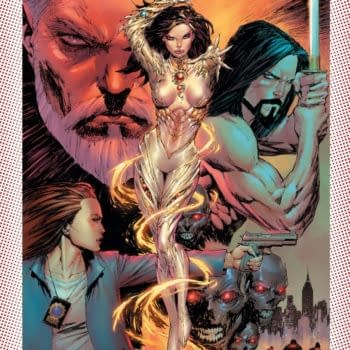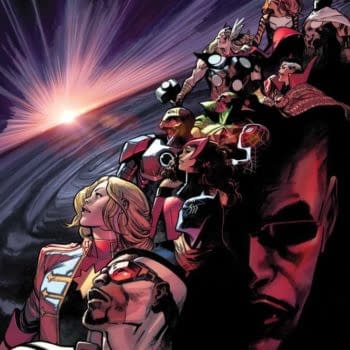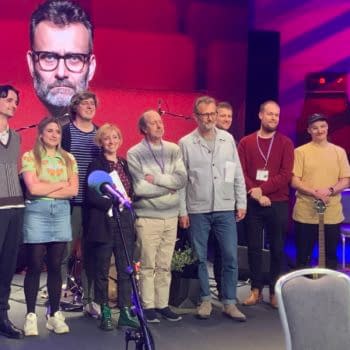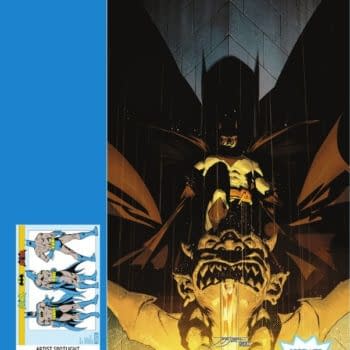Posted in: Recent Updates | Tagged:
Publishing The Graphic Novel At NYU #1 by Dallas Middaugh

So the plan is that I'm going to be teaching "Publishing the Graphic Novel" for NYU this Saturday, and for two more Saturdays in February. It'll be my second time teaching this class, and it would be an extreme understatement to say that I'm looking forward to it. If there was a way for me to turn teaching how graphic novels get published into a full-time job, I'd be a happy nerd.
Here's the NYU page on the class and here's the full syllabus:
I've been in the graphic novel business for a decade now (and in publishing for fifteen years). I started at Viz; went on to work as a consultant with Oni, Slave Labor and Hasbro; co-founded Seven Seas; wrote two graphic novels; and ultimately worked for Random House where I helped to found the Del Rey Manga imprint.
It's been a decade of watching the medium I love grow and expand and become what we'd always dreamed it could be. And as great as it is today – and I do believe we live in a golden age for comics and graphic novels in this country – it's got the potential to become even bigger in the coming years.
To understand what's coming, though, we have to look back, so I start this class with a short history of the graphic novel. Arguments can be made that sequential art as a storytelling technique goes back as far as the work of William Blake, the Bayeux Tapestry, or even cave paintings. But starting that far back isn't really that practical. For our purposes, we'll say that the modern graphic novel starts with the comic strips of the early 20th century, and their eventual collection into magazine form, otherwise known as comic books.
There's a lot of worthy books and classes out there about the development of the medium, but what interests me most – and therefore what I spend the most time on – is the business side of things. Distribution, mainly, and the development of the direct market, a method of book sales pretty alien to most traditional book publishers today. Understanding why the American comic book store has become what it is, is a fascinating journey through an industry that was at one time in danger of being replaced forever by racks devoted to sunglasses and key rings. It is the story of dedicated readers who would not let the stories they loved die, and whose passion is responsible for some of the most successful movies, television shows, and video games today.
And paved the way for some amazing graphic novels and comics as well.
In our second class, we talk about genres and numbers. Because I'm an associate publisher at Random House, I tend to think of things in terms of how they sell in bookstores. And in bookstores, here are the most common categories of graphic novels today.
➢ Manga
➢ Superheroes
➢ Memoir
➢ Literary Works
➢ Kids
➢ Alternative/Indy
Is that a controversial list? Probably not. I can think of a lot of genres that aren't represented there, of course, but if they're not on the list it's because as a general rule, they don't sell that well, or there aren't enough of them in stores to amount to significant sales numbers.
This year we're adding a field trip to a major bookstore and a comic shop. We didn't do that last year, and my students, not all of whom were frequent visitors of comic shops and graphic novel sections, suffered a bit. So I'm correcting that this time around.
We've even got a guest speaker – Tomoko Suga of Kodansha USA. She'll talk about how manga gets published in Japan, and even after doing this for ten years, I find there's always something new to learn. Tomoko is an old hand at this, and behind the scenes she's one of the most influential people in the American manga market over the past decade. I don't know how she'd feel about me saying that, so don't tell her I mentioned it, okay?
In our final class we talk about digital distribution, looking first at the current players and then pulling out the crystal ball to speculate about the future. And then we'll talk briefly about sales and marketing, and what that means in dedicated comic stores and bookstores, two very different markets.
Or at least, we'll try to. My last class enjoyed our two-day seminar, but they felt I crammed too much into those two days. This year, it's going to be three days and we're going to take our time. There will be a lot of discussion – the most fun part of the class for me – and we might take a few left turns as a result. Oh, and there will be homework, but it will be fun, I promise.
Hope to see you there!











